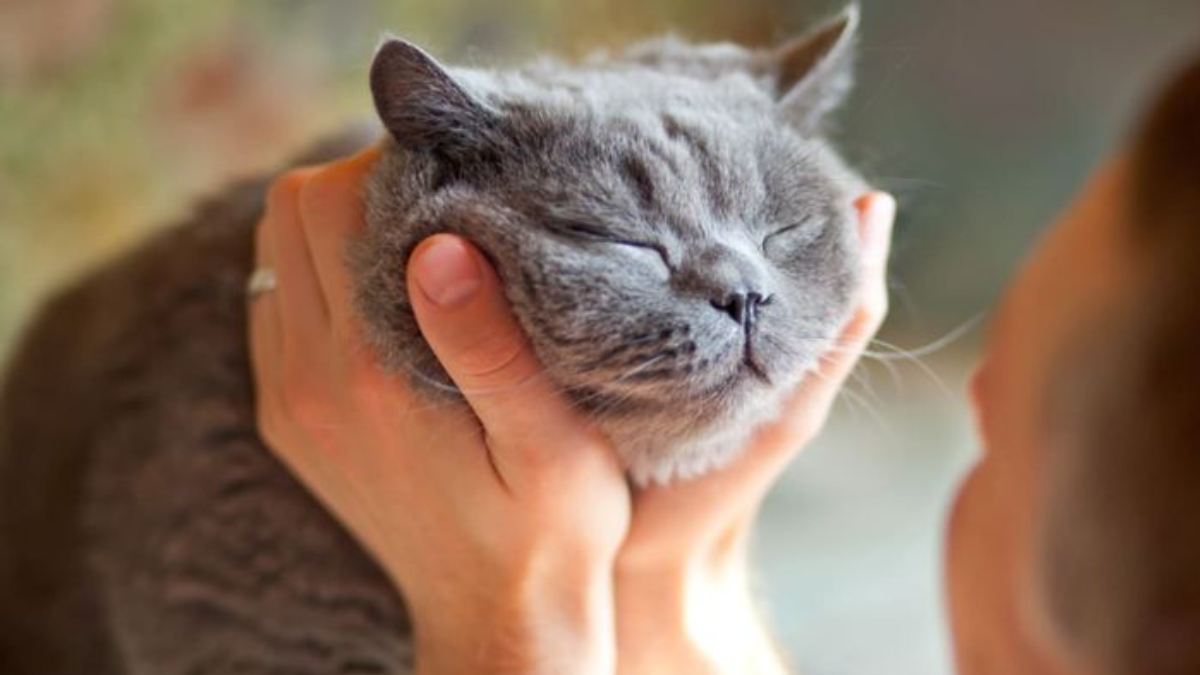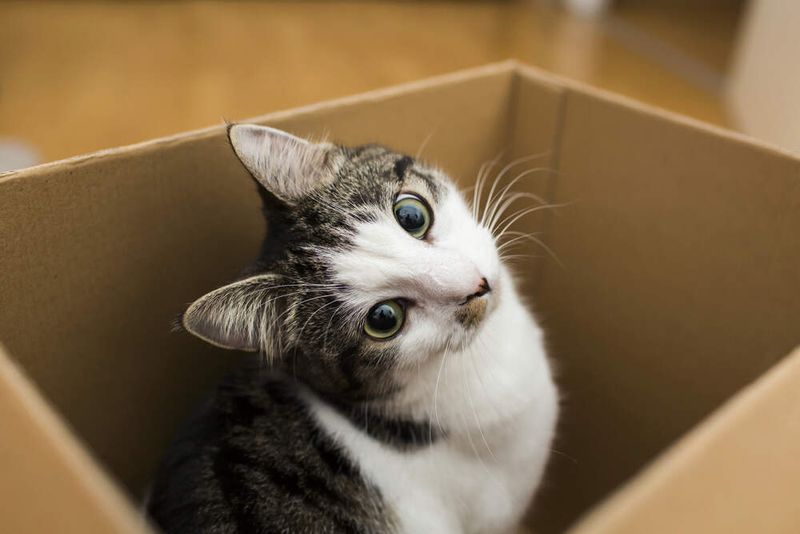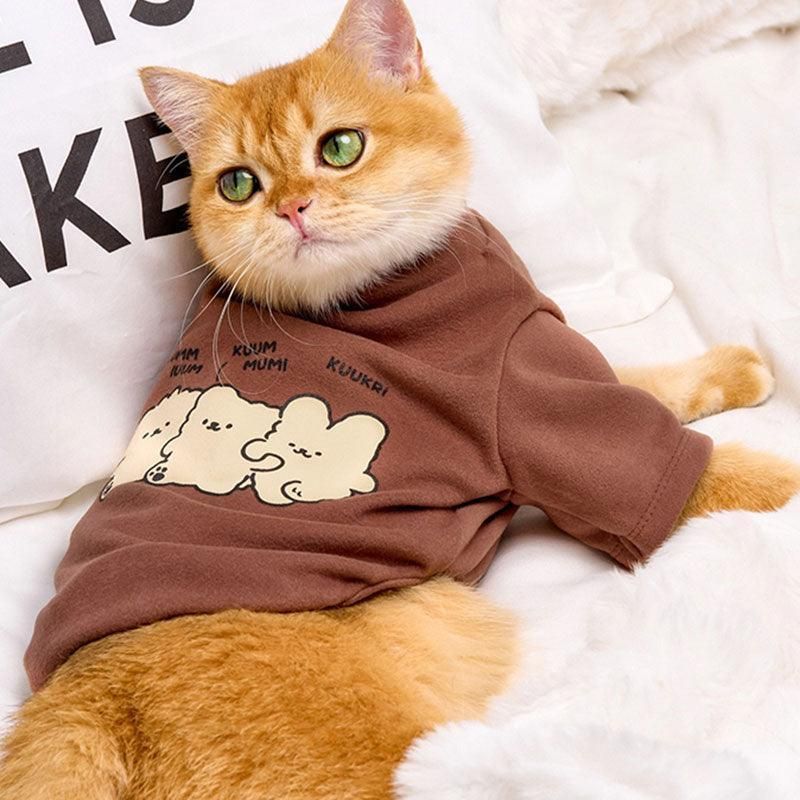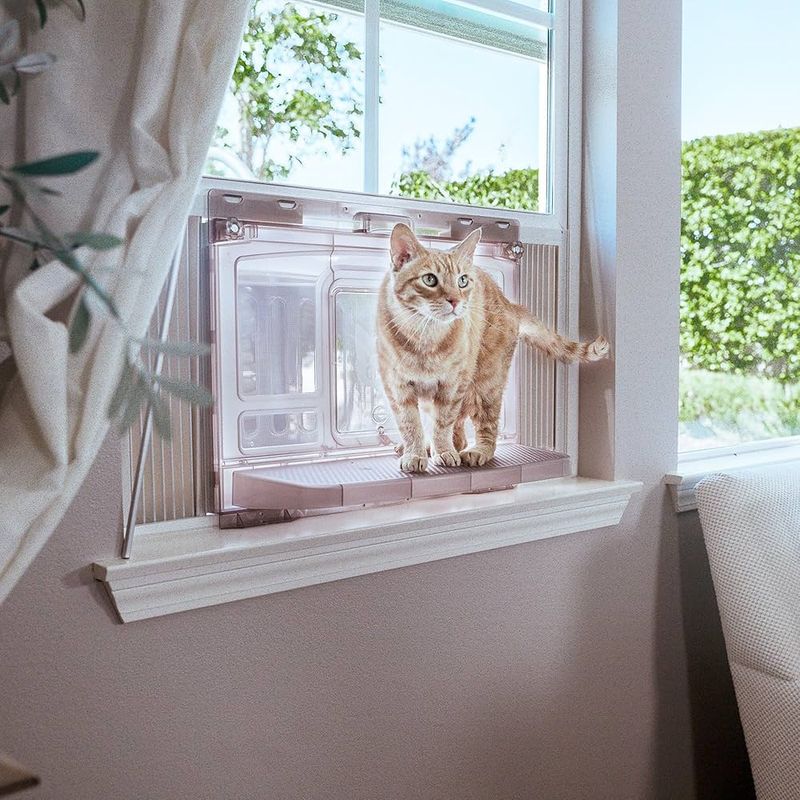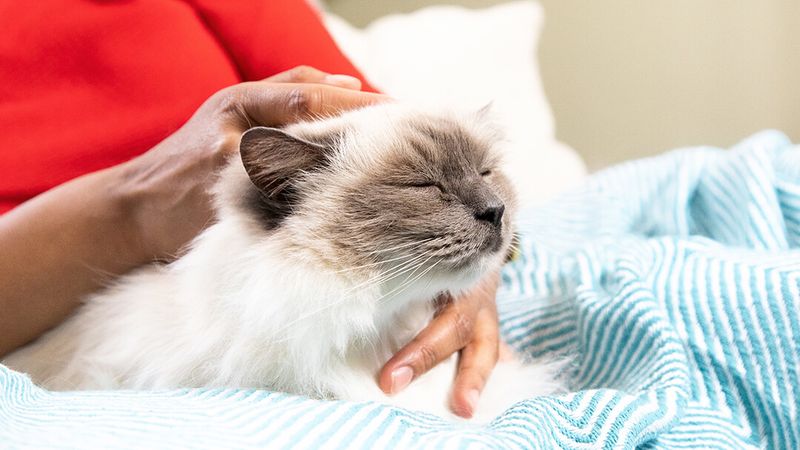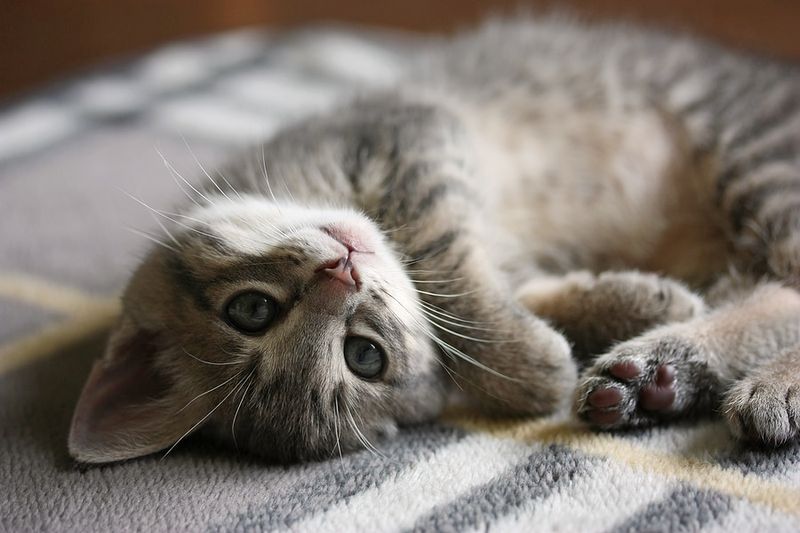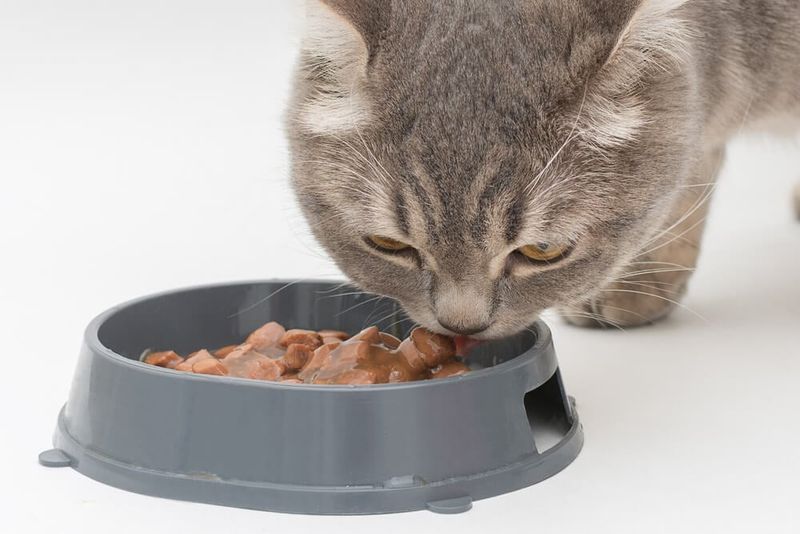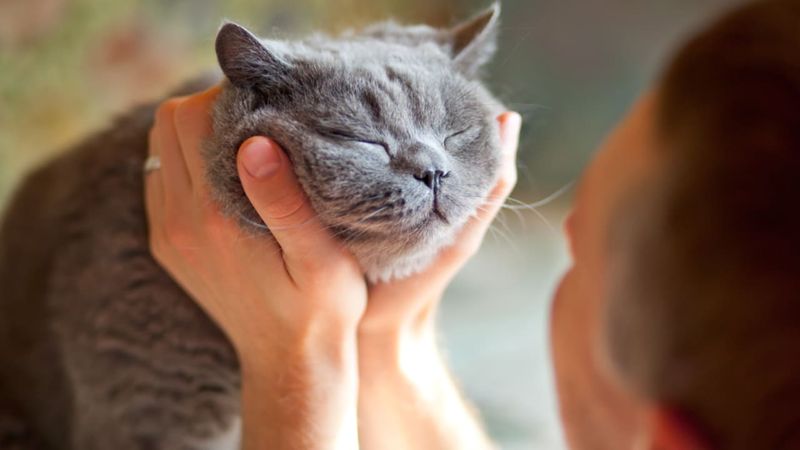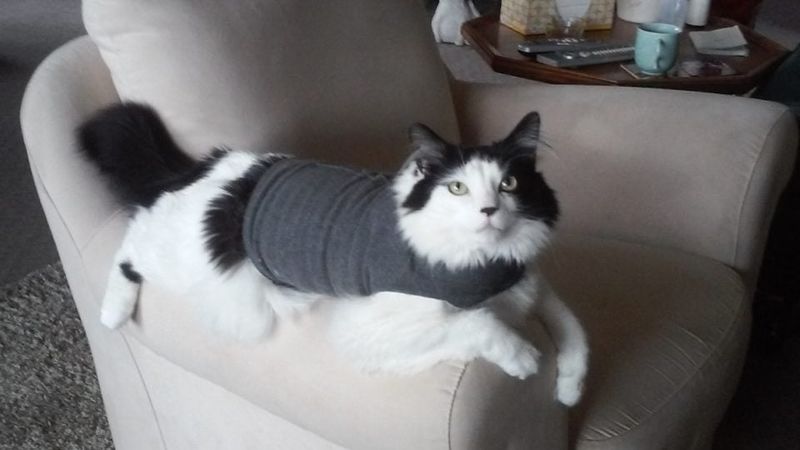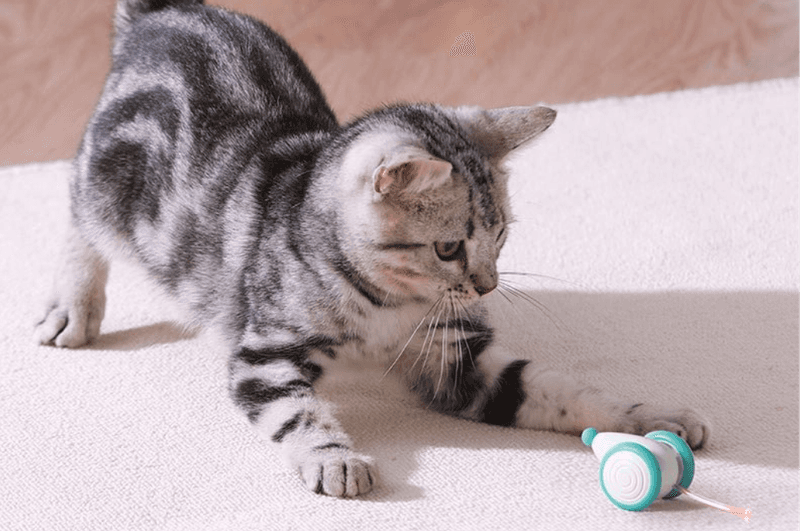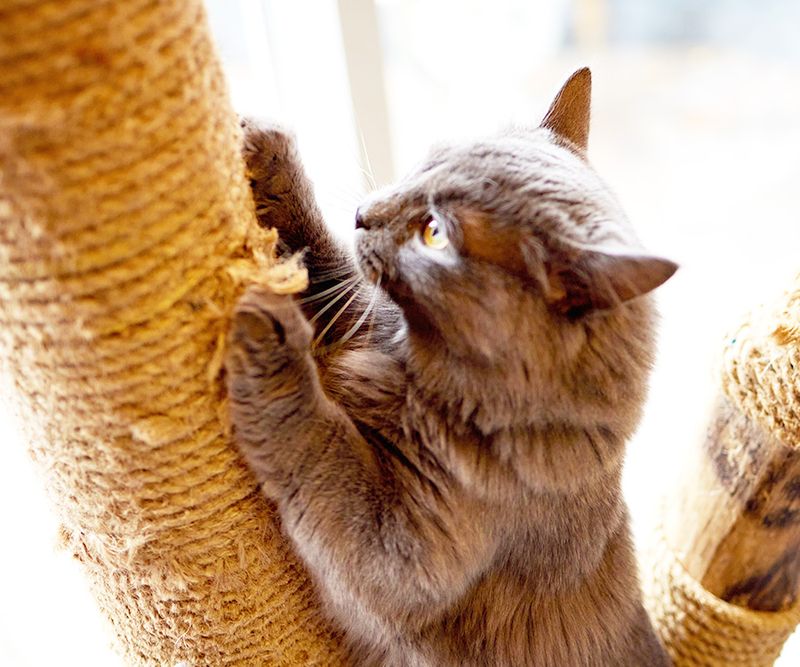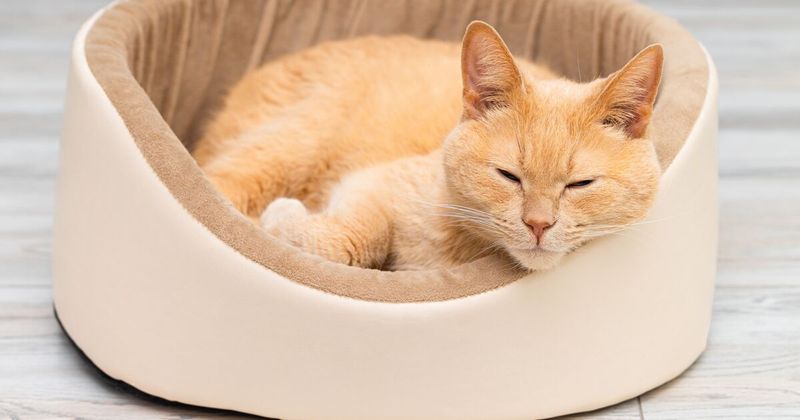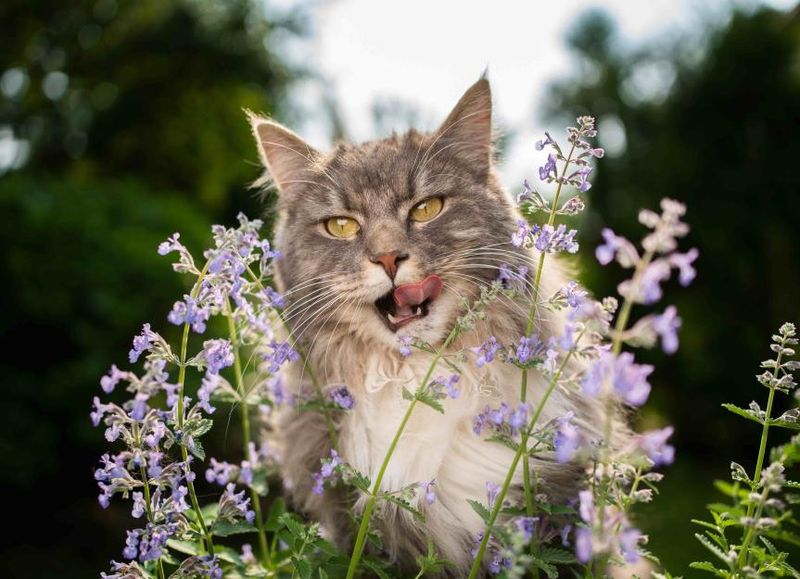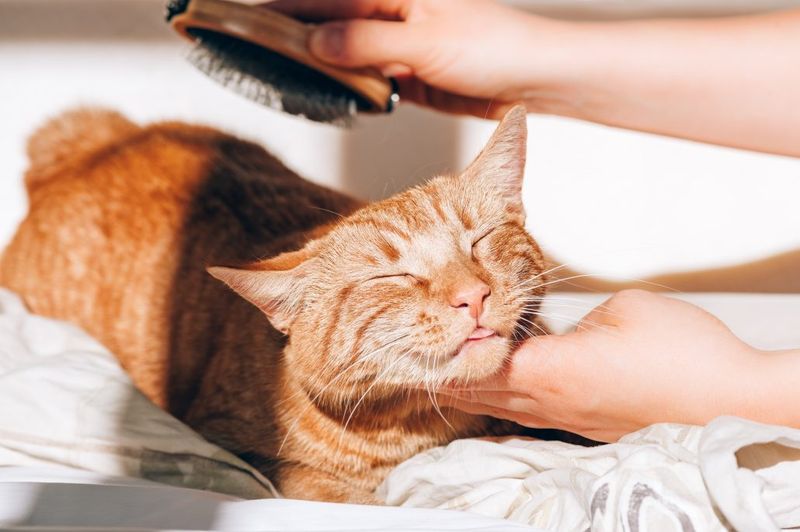📖 Table of Content:
- 1. Cozy Hiding Spots
- 2. Familiar Scented Items
- 3. Elevated Perches
- 4. Gentle Background Noise
- 5. Pheromone Diffusers
- 6. Predictable Routines
- 7. Slow Blinking Communication
- 8. Pressure Wraps
- 9. Interactive Toys
- 10. Scratching Posts
- 11. Warm Resting Spots
- 12. Calming Herbs and Plants
- 13. Grooming Sessions
Cats are sensitive creatures who sometimes need extra support during stressful situations. Whether it’s a thunderstorm, visitors in your home, or a trip to the vet, knowing how to comfort your feline friend can make all the difference.
The following items and techniques can help your cat feel secure and relaxed when the world seems too overwhelming.
1. Cozy Hiding Spots
Cats seek shelter when feeling threatened. A cardboard box with a soft blanket inside creates an instant sanctuary where your cat can retreat and observe their surroundings safely.
The enclosed space helps cats feel protected on multiple sides, reducing their vulnerability. Many cats prefer boxes slightly smaller than you’d expect – the snug fit adds to their sense of security.
Placing these hideaways in quiet corners of your home gives your cat options to escape when they need alone time. Having multiple hiding spots throughout your home ensures your cat always has a safe place nearby.
2. Familiar Scented Items
Scent provides powerful comfort to cats. A blanket or toy carrying your scent can reassure your cat when you’re away or during stressful situations like car rides or vet visits.
Cats recognize their family members primarily through smell. The familiar scent reminds them of safety and routine, helping to calm their nervous system almost immediately.
For maximum effectiveness, rotate these comfort items regularly between your cat’s favorite spots and places where you sit or sleep. This refreshes your scent and maintains the item’s comforting properties when your cat needs reassurance most.
3. Elevated Perches
Height equals safety in the feline world. Cat trees, shelves, or window perches give your kitty a commanding view of their territory while staying physically removed from perceived threats below. From these vantage points, cats can monitor activity without feeling cornered.
The vertical escape route provides tremendous psychological security, especially in multi-pet households or when visitors arrive. Strategic placement of perches near windows offers the bonus of entertainment through bird-watching or sunbathing opportunities.
This combination of security and enrichment makes elevated spots essential for any cat experiencing anxiety or uncertainty.
4. Gentle Background Noise
White noise machines or soft music can mask startling sounds that might trigger anxiety in your cat. The consistent audio backdrop creates a sonic buffer against unexpected noises like thunder, construction, or loud neighbors.
Classical music with slow tempos has been shown to reduce stress hormones in cats. Some pet parents leave televisions tuned to nature programs with gentle narration for a similar effect. Specialized cat music exists with frequencies and tempos designed specifically for feline ears.
These compositions often incorporate purring sounds and birds chirping at pitches that naturally appeal to cats, helping them feel more at ease.
5. Pheromone Diffusers
Synthetic versions of cats’ natural calming pheromones work wonders for anxiety. These products mimic the facial pheromones cats deposit when rubbing their cheeks against objects – a sign they feel safe and secure in that environment.
Available as plug-in diffusers, sprays, or wipes, these products create an invisible cloud of calming chemistry. Many veterinarians recommend them for situations like moving to a new home, introducing new pets, or during renovation projects. For maximum effectiveness, place diffusers in rooms where your cat spends the most time.
The effects aren’t immediate but build gradually, creating a consistently reassuring environment that helps reduce stress behaviors.
6. Predictable Routines
Cats thrive on consistency. Regular feeding times, play sessions, and even predictable household activities help your cat feel secure through the comfort of knowing what comes next. During particularly stressful periods like home renovations or holiday visitors, maintaining your cat’s core routine becomes even more important.
The familiar schedule acts as an anchor amid changes, giving your cat islands of normalcy throughout the day.
Even small consistencies matter – using the same words before mealtime or following the same path during play sessions reinforces the predictability cats crave. This reliability helps reduce anxiety by making their world feel ordered and safe.
7. Slow Blinking Communication
The feline slow blink is a powerful trust signal. When cats feel vulnerable, this gentle communication from their humans reassures them that all is well.
Make eye contact with your anxious cat from a comfortable distance, then slowly close and open your eyes. This mimics a cat’s natural way of showing they’re relaxed enough to momentarily let their guard down – a significant gesture in the feline world.
Pair this calming signal with a soft, steady voice using their name. The combination of familiar sounds and trusted visual cues helps lower your cat’s stress response, creating a bridge of communication when they’re feeling overwhelmed.
8. Pressure Wraps
Gentle, consistent pressure around a cat’s torso can create a calming effect similar to being held. Specialized cat anxiety wraps apply light, even pressure that helps reduce the physical symptoms of stress.
The sensation mimics the security of a mother cat’s grip when carrying kittens. Many cats who resist being held will tolerate or even enjoy the distributed pressure of these garments during thunderstorms or fireworks.
Start with short wearing periods during calm times so your cat associates the wrap with positive experiences. Gradually increase duration as your cat becomes comfortable, always monitoring for signs of distress or discomfort that might indicate the wrap isn’t right for your particular cat.
9. Interactive Toys
Play serves as natural stress relief for cats. Wand toys, puzzle feeders, or automated laser pointers redirect anxious energy into positive activity, helping cats work through their nervous feelings. The physical exercise releases endorphins that counteract stress hormones.
Just 10-15 minutes of active play can noticeably change your cat’s demeanor from tense to relaxed, especially if offered before typically stressful events.
Toys that mimic prey movements are particularly effective at capturing attention. The focus required for stalking and pouncing creates a meditative state that displaces anxiety. This mental engagement, combined with physical activity, provides powerful relief from various forms of feline stress.
10. Scratching Posts
Scratching is a self-soothing behavior for cats. The physical action releases tension while simultaneously marking territory with scent glands in their paws – both deeply reassuring activities. During times of stress, cats often scratch more frequently.
Having appropriate outlets prevents destructive behavior while satisfying this natural urge. Vertical posts, horizontal pads, and corrugated cardboard scratchers offer different textures and positions to suit your cat’s preferences.
Strategic placement near resting areas or entry points provides convenient access when your cat needs stress relief. The combination of physical exertion, scent marking, and territory claiming makes scratching posts essential comfort tools for unsettled cats.
11. Warm Resting Spots
Heat provides profound comfort to anxious cats. Thermal beds, warming discs, or sunny windowsills offer warmth that relaxes tense muscles and encourages deep, restorative sleep during stressful periods.
Cats naturally seek temperatures between 85-100°F (29-38°C), which is warmer than most homes. This preference explains their attraction to electronics, fresh laundry, and sun puddles – all sources of the healing warmth they crave.
Self-warming beds with reflective thermal layers offer consistent comfort without electricity. For extra support during extreme stress, microwaveable heating pads designed specifically for pets provide temporary intensive heat therapy that can dramatically calm an agitated cat.
12. Calming Herbs and Plants
Certain plant essences can naturally soothe feline anxiety. Catnip, despite its reputation for causing excitement, actually has a calming effect on approximately 30% of cats, especially when consumed rather than sniffed.
Silver vine and valerian root offer alternatives for cats who don’t respond to catnip. These herbs can be sprinkled on bedding or offered in toys specifically designed to hold dried herbs. The effects typically last 10-15 minutes but can provide crucial relief during stressful events.
Cat-safe lavender, grown out of reach or used in diluted essential oil diffusers (placed where cats can leave the area), may also create a subtly calming environment. Always research plant safety thoroughly before introducing any herb to your cat’s environment.
13. Grooming Sessions
Gentle brushing mimics the social grooming cats experienced as kittens. The rhythmic strokes release endorphins while strengthening your bond – a powerful combination for anxiety relief. Start with short sessions using a brush your cat already enjoys.
The predictable sensation of being groomed in the same pattern creates a meditative experience that can lower heart rate and reduce stress hormones circulating in your cat’s system. For maximum calming effect, keep movements slow and pressure consistent.
Pay attention to your cat’s body language and focus on their favorite spots, usually the cheeks, chin, and back. This positive physical contact reassures cats of their secure place in your family.
